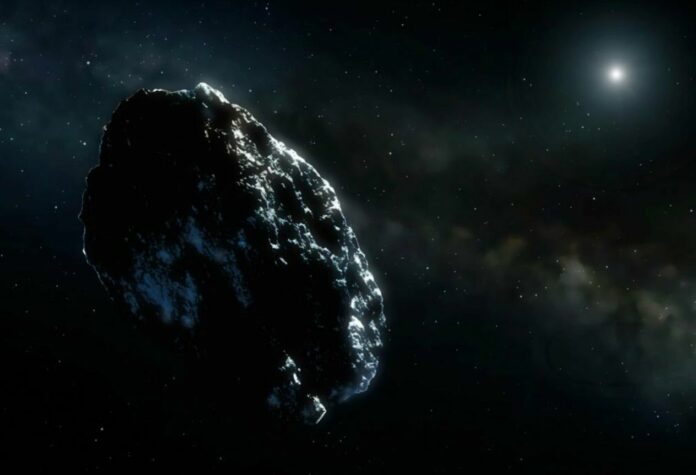Lunar Legacy: 200-Foot-Wide Asteroid Confirmed as Piece of the Moon
A group of space scientists have uncovered a potential link between Kamo’oalewa, a recently identified asteroid near Earth, and the Moon.
They suggest that this asteroid could be a lunar fragment, potentially dislodged by an impact from a meteorite. The researchers propose a unique trajectory that could have brought Kamo’oalewa into a solar orbit closely aligned with the Earth and the Moon.
Published in the Communications Earth & Environment journal on October 23, the team’s discoveries add to the growing body of research surrounding Kamo’oalewa.
A forthcoming Chinese space mission, planned for 2025, aims to further investigate by landing on the asteroid and returning samples to our planet.
Aaron Rosengren, a senior author of the study and a professor at the University of California San Diego, added, “Elements from this space body can give us information about the formation of the Earth’s moon and improve our knowledge of near-Earth asteroids.”
Historically, scientists believed that near-Earth asteroids primarily originated from distant regions beyond Mars’ orbit.
However, Renu Malhotra, another senior author and planetary sciences professor at The University of Arizona, emphasizes that this discovery highlights the Moon as a potential source, suggesting that additional lunar fragments might be hidden among these near-Earth objects.
Kamo’oalewa, named after a Hawaiian term reflecting its intermittent visibility, operates as a quasi-satellite. This designation means it orbits the Sun while remaining in relative proximity to Earth, unlike the majority of asteroids located in the main belt between Mars and Jupiter.
Jose Daniel Castro-Cisneros, the study’s lead author and a graduate student at The University of Arizona, points out Kamo’oalewa’s long-term stability in its unique orbit. He anticipates that it will maintain this position, alternating between its current quasi-satellite state and a horseshoe-like co-orbital motion for millions of years.
The research team used numerical simulations to understand the likelihood of a lunar fragment achieving Kamo’oalewa’s specific orbit. Despite the challenges, they discovered a 6.6% probability for fragments to enter co-orbital orbits, with a 0.8% chance for transitory motion like that of Kamo’oalewa.
“Modern space mission analysis and design,” Rosengren added, “have been using rare space highways for years. We wanted to know how Kamo’oalewa fit in.”
Over its long existence, the Moon has experienced numerous asteroid strikes, leaving a plethora of impact craters visible on its surface. These collisions have resulted in the expulsion of lunar material, with the majority eventually returning to settle back on the lunar surface. Some fragments, however, transform into meteors and journey toward Earth.
Interestingly, a select few of these lunar fragments manage to elude the gravitational forces of both the Moon and Earth, subsequently finding themselves in solar orbits akin to those of near-Earth asteroids. Numerical simulations propose the possibility that Kamo’oalewa belongs to this exceedingly rare category, achieving a challenging co-orbital position relative to Earth.
This research sheds light on the nature of near-Earth asteroids, which pose potential threats to our planet. Further investigation of Kamo’oalewa, particularly determining its specific lunar origin, will offer valuable knowledge on the mechanics of asteroid impacts.
Looking ahead, Jose Daniel Castro-Cisneros and his team plan to pinpoint the exact conditions that facilitated Kamo’oalewa’s unique orbital journey. Their aspirations also include determining the precise age of this asteroid.
“We need more information to say with certainty that Kamo’oalewa is indeed a fragment of the moon,” Rosengren added, “and a space mission to this unique celestial body is warranted.”
Image Credit: iStock
